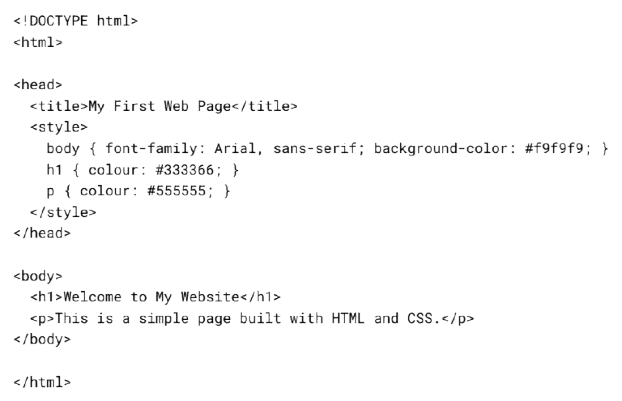A Beginner’s Guide to HTML & CSS
If you’re new to web development, understanding HTML and CSS is the first step to creating your own web pages. These two languages form the foundation of every website on the internet, and learning them opens the door to building custom online content with confidence.
What Is HTML?
HTML, or HyperText Markup Language, is the backbone of any web page. It structures the content by defining elements like headings, paragraphs, images, links, and lists. Think of HTML as the skeleton of a webpage, it organises the content in a meaningful way so browsers know what to display.
HTML uses tags, which are keywords enclosed in angle brackets, such as < h1 >, < p >, and < a >. These tags tell the browser how to present different parts of the content. For example, < h1 > marks a main heading, while < p > defines a paragraph.
What Is CSS?
CSS, or Cascading Style Sheets, is what makes web pages look good. While HTML structures content, CSS controls the presentation, colours, fonts, layout, spacing, and more. It allows you to change the appearance of your webpage without altering the underlying HTML.
CSS works by targeting HTML elements and applying style rules to them. For instance, you might use CSS to make all your headings blue or add space between paragraphs. This separation of structure (HTML) and style (CSS) is what makes web development both flexible and manageable.
How Do HTML and CSS Work Together?
HTML and CSS work hand in hand. When you build a web page, HTML provides the content and basic structure, while CSS decorates and arranges that content. The browser reads the HTML first to understand what content exists, then applies CSS rules to determine how that content should look.
For example, an HTML paragraph:
Hello, world!
will display as simple text by default. But if you write CSS to make paragraphs bold and red, the browser will show the text accordingly.
Getting Started with Building Simple Web Pages
For beginners, starting with a simple HTML file is best. You can create a basic page with headings, paragraphs, and links using a text editor like Notepad or VS Code. Once you’re comfortable, you can add CSS either directly in the HTML file using < style > tags or by linking to an external stylesheet.
Here’s a simple example to get you started:

Experimenting with these fundamentals will give you a solid grasp of how HTML and CSS work together to build websites and pave the way for more advanced design skills.
Learning Resources
There are plenty of free resources online where beginners can practice. Websites like MDN Web Docs, W3Schools, and freeCodeCamp provide tutorials, examples, and exercises to guide you from beginner to proficient coder.
Looking to Build Your First Website?
Whether you need a little help or a full website built from the ground up, Palm PR has you covered. Get in touch today and let’s create something great together.
Subscribe to the newsletter
Subscribe to receive notifications on the latest Case Studies, Insight and Blog releases.



